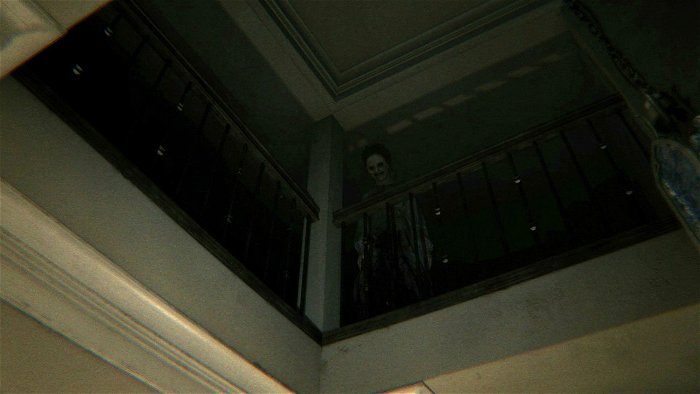P.T. is probably my favourite horror game despite it being the one I’ve spent the least amount of time playing. Released as a free teaser for a now-cancelled Silent Hills game to be directed by Hideo Kojima and Guillermo del Toro, P.T. is an extremely minimal exercise in creating tension. Over the course of 10 or 15 minutes, the player is introduced to a setting, given time to become unnerved, and then left to either continue soaking in the atmosphere or simply stop playing.
The game’s premise is simple. An unidentified protagonist wakes up in an abandoned suburban home. From a first-person perspective, the player walks through its endlessly looping hallways, listening to horrible noises, finding themselves trapped in suddenly locked rooms, and encountering frightening monsters. The player is exposed to a terrifying setting that can be explored in the same amount of time as most games spend on their tutorials. This is a good thing. P.T. is so memorable, in part, because it never gets a chance to outstay its welcome. Though players can spend a long time trying to solve the game’s obtuse puzzles in order to trigger a final cutscene, the bulk of its audience will see everything there is to see in only a single, brief sitting.

P.T.’s short playtime is unusual for video games, horror titles included. Most often, developers seem eager to ensure that players don’t feel shortchanged by any game’s length, regardless of whether a brief runtime would benefit its vision. Titles like Creative Assembly’s Alien: Isolation and Red Barrels’ Outlast are well crafted. They’re cleverly designed to offer great, foreboding atmospheres and intensely frightening moments. They’re also way too long for their own good.
“Horror is most effective when it keeps its audience on edge”
Horror is most effective when it keeps its audience on edge—when it refuses to allow them time to grow accustomed to their fear. An important element in accomplishing this is tightly controlled pacing. A work’s writer and/or director has to know how to not just introduce tension, but to control it by carefully amplifying and reducing its effect over the length of the experience. In videogames, as in every other type of horror media, this means that moments of terror have to be slowly developed through inactivity and only occasional exposure to the source of fear. If the player will eventually contend with a malicious ghost or a grotesque creature, they won’t be scared if they’re constantly having to fend it off. Instead, it’s more effective to spend more time anticipating seeing the creature than actually fighting it off (or running away).

In Alien: Isolation, the greatest moments of fear come when the player first encounters the alien. When she hasn’t yet learned its range of movement, arsenal of attacks, and the consequences of being caught by the monster, encountering it amplifies the game’s tension. After being exposed to it too often, though, it becomes predictable and can’t lead to the same level of fear. The violent inmates of Outlast’s asylum work similarly.
“By being so short, though, P.T. avoids this problem.”
If these games were half their length, it would be much easier for their developers to control how often players come face-to-face with the monsters or killers stalking them. As it is, eight to twelve hours of a game can’t be spent anticipating an enemy before its reveal. The moments that would usually constitute a horror book or movie’s final act end up prolonged over half (or more) of a videogame’s runtime. (A horror game that spends hours building tension by refusing to showcase its enemies would be a tough sell.)
By being so short, though, P.T. avoids this problem. Its scares are contained to such a small environment and its narrative is so (intentionally) limited in scope that its designers are able to exercise nearly complete control over how it’s experienced. The player can interact with the setting but, to progress, they have to move forward through an increasingly disturbing haunted house at the pace set by its creators.
Most importantly, its brevity means that P.T. never allows the player enough time to become inured to the terrifying sounds and gruesome ghosts stalking its hallways. Its reveals—a horrible apparition zooming up to the player’s face, a bizarre fetus wriggling in a sink—happen suddenly and aren’t dwelled on. The shocks come when the game’s tension has reached its highest point and because P.T. knows not to overstay its welcome, the player is never given the relief of feeling like they’ve fully understood the horrors they’ve witnessed.




